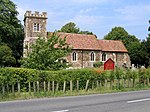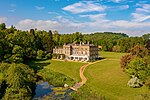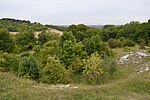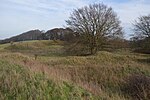Higham Gobion Castle
Castles in BedfordshireEngland castle stubs
Higham Gobion Castle was once believed to be an 11th-century castle located in the village of Higham Gobion. Now it is part of the civil parish of Shillington, in the English county of Bedfordshire. It has since been determined that the site was in fact a fishery with a breeding island that was mistaken for a defendable moated building of some sort. The "castle" was located 3 miles from Pirton Castle, and 14 miles south of Bedford Castle. Only earthworks remain at the site. Roman Antiquities, such as coins, millstone and cinerary urns have been discovered near the site.
Excerpt from the Wikipedia article Higham Gobion Castle (License: CC BY-SA 3.0, Authors).Higham Gobion Castle
Barton Road,
Geographical coordinates (GPS) Address Website Nearby Places Show on map
Geographical coordinates (GPS)
| Latitude | Longitude |
|---|---|
| N 51.9868 ° | E -0.3914 ° |
Address
Higham Gobion Castle
Barton Road
MK45 4JP , Gravenhurst
England, United Kingdom
Open on Google Maps










